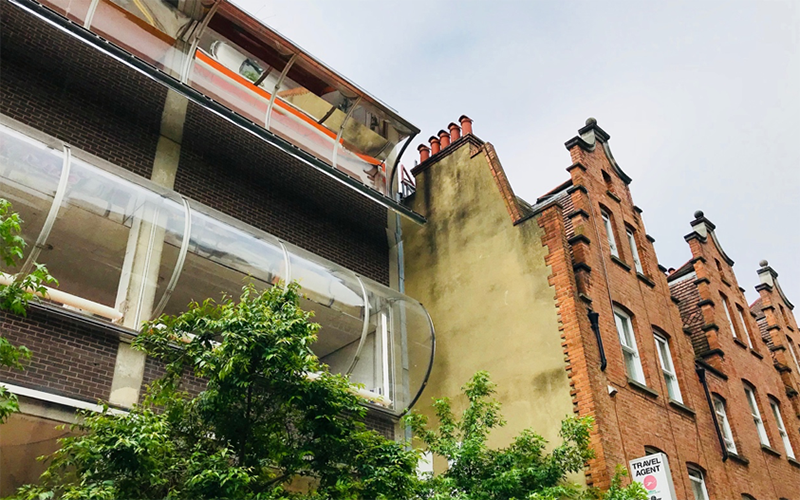 Research
Research

Subject
Coworking and New Urban Chance: Exploring the Relationship Between Collaborative Working Spaces and their Urban Context
First and second supervisors
- Professor Alan Penn, The Bartlett School of Architecture
- Dr Juliana Martins, The Bartlett School of Planning
Sponsor
ESRC: Doctoral Training Partnership (UBEL DTP) – Urban Studies, Transport and Architectural Space Pathway
Abstract
My interests span across firstly, the relationship between precariousness cultures emerged after the recession of 2008, emergent work patterns and the use and production of space. Secondly, to understand how the interactions between individuals and their physical and social environment are tightly entangled.
The study aims to investigate urban effects of new workspace patterns, comparing the London Borough of Hackney and the Creative Cluster in the northern area of Milan, regarding community construction and interaction, contribution to urban revitalisation trends, and local physical transformations.
The urban phenomenon of collaborative working spaces in the city can be seen as a reaction to the increasing level of uncertainty due to the collapse of the employment paradigm, trying to put a positive turn on precarious conditions, re-defining the unpredictable access to stable work as ephemeral and flexible and the socio-spatial transformation of entire neighbourhoods as its direct consequence. In particular, the study seeks to respond to the following question: Can coworking spaces contribute to the successful development of the Town Centre, in terms of local businesses provision and public space activation, bringing benefits to the local economy to provide a healthy impact on the neighbourhood?
Therefore, this study aims to fill this gap by examining the location patterns of co-working spaces and their urban effects at different scales, both in terms of urban spaces and social practices, including: the impact on the surrounding public space; the wider urban revitalisation (from an economic and a spatial point of view); community building, with the subsequent relationship between co-working members and the local community, the cognitive dynamics and attachment aspects generated at the local level, where proximity dynamics can have spill-over effects.
Biography
Irene is an ARB architect and urban designer. She studied Sustainable Architecture at the Politecnico of Milan and holds an Interdisciplinary Urban Design MRes at The Bartlett School of Planning. Irene has held teaching and research positions at Politecnico of Milano, The Bartlett School of Planning, and the London South Bank University.
Her carrier has been complemented by an active participation in parallel activities, such as the foundation of Presidio Temporaneo di Architettura, and research roles for the Hackney Council and in the Civic Design Group/CivicWise Association. She is working as urban designer with AR Urbanism, gaining more experience in designing and implementing qualitative methodologies in placemaking strategies, human-centred approach and community engagement.
Currently, Irene is an ESRC-funded doctoral student at The Bartlett School of Architecture, with interests in the relationship between precariousness cultures, work patterns and the use and production of the urban space.
- Publications
Manzini Ceinar, I. (2019). “Urban Effects of Coworking Spaces for Community-led Action. Spatial processes and social interaction around collaborative workspaces”, OFFICINA* Journal Design N° 29, Rivista di Architettura, Tecnologia e Ambiente, ISSN 2532-1218
Manzini Ceinar, I. (2019). “Co-working As New Urban Chance”. Journal of Urban Design N° 149, ISSN 1750 712X
Manzini Ceinar I. in Garcia-Ruiz,M., Henriques, M., Chaves, H., Oliveira A.S., Ferreira, AC., Colombo, A., Almeida, S., Santos, R., (2018). “Moving Ideas: from Network-City to Cluster-City”. Third International Conference of Young Urban Researchers, ISBN: 978-972-8048-34-1
Manzini Ceinar I. (2017).” Folkestone on the Border: A Dislocated City Living “In-Between”. – UCL Urban Laboratory, Medium.com
Chiari A., Chiroli, A., Manzini Ceinar I., (2015). “Creative Housing: Diaphragm as a Tool Generating New Spaces. Housing the Future, alternative approaches for tomorrow”. AMPS (Architecture, Media, Politics, Society), Edited by Graham Potts and Rachel Isaac-Menard. ISBN 978-0-9933706-0-1
Image: Second Home, Spitalfields. Irene Manzini Ceinar, June 2018
 Close
Close

